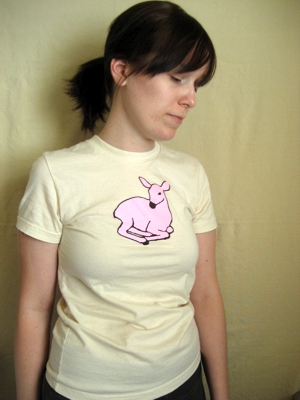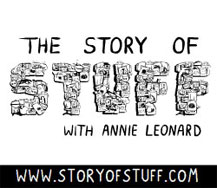
For a lot of us, green crafting means using eco-friendly materials. Or maybe it means using your crafty skills to replace disposables in your life with reusables. Either way, the environment plays a big role in ethical crafting for most of us. For many of us, though, ethical crafting is about making a difference for individual people as well as the environment, and that’s just as important.
HandCrafting Justice is a good example of folks using crafty skills to change lives. The group – a project of Sisterhood of the Good Shepherd – sells hand-crafted, fair trade-certified goods. They train their artisans, so they can make a living off of their crafts in areas where eking out any sort of living can be a big challenge. Sisterhood of the Good Shepherd is a religious organization, and while HandCrafting Justice is one of their projects they do not directly run the company.
Marketing manager at HandCrafting Justice, Katherine Leonetti, was kind enough to answer a few questions about HandCrafting Justice and what they do.
Crafting a Green World: Tell me a little bit about how you connect with the artists that you work with:
Katherine Leonetti: HandCrafting Justice works with artisans from many walks of life, from rural women who have learned indigenous crafts passed down from their ancestors to victims of sex trafficking and other global crises. The common thread is that all the women we work with are involved with community centers administered by the Sisters of the Good Shepherd and the Good Shepherd International Foundation. These community centers serve as important sources of education and poverty relief for the people they serve, and the services offered and vary according to the most pressing needs of each locality. HandCrafting Justice was started by the sisters in order to create income generating projects for these marginalized women through providing access to U.S. markets for handmade, Fair Trade crafts.
CAGW: From your About page, it sounds like Sisters of the Good Shepherd are the ones that identify and train your artisans. Can you tell us a little bit about what training is like? What skills do you teach them, and how does training work?
KL: The training varies depending on the specific needs of the women coming to the centers. For example, many of our partners in Mexico are skilled Huichol artisans who create brilliant works of indigenous beaded and string art, seen here. Because they have learned these skills from their families growing up, HandCrafting Justice merely provides a market for these gorgeous crafts. However, there is a limited international market for these goods and the Huichol people are economically marginalized in Mexico, so in recent years the sisters have begun to train these same artisans in machine sewing techniques. They have since contributed to our Fair Trade Uniforms project which provides ethically produced school uniforms and other goods to American markets. Most often, when the women are taught a new skill a third party expert is hired through funding from Good Shepherd International. Then, when enough women have been trained and are comfortable with the techniques, the most skilled artisans are paid through the center as teachers to train new women in search of work.
In addition to international income generating projects, the women often also have access to training for other skill sets they can use domestically. For example, in addition to be highly skilled embroiderers and producing detailed toys, our partners in Bangkok also have the opportunity to learn to raise livestock, train as hair stylists, or work in the community-run restaurant managed and staffed by women who work in the center. For women who had formerly been forced into prostitution and sex trafficking, these opportunities allow them to start over with real marketable skills in addition to producing crafts for added income.
CAGW: Can you share a couple of stories of artisans who’s lives you’ve touched?
KL: I think the stories are best told by the women themselves… below are just two of many quotes from artisans who have had a positive experience with HCJ:
“I had lived in the Din Daeng slums [of Bangkok] my whole life. I am separated from my husband, and I had little education so I could not find work to support my twin daughters. My main goal is to make sure that they get a better education than I had. I came to the Fatima center, where I learned how to hand-stitch. Now, with the money I earn working, I can keep my daughters in school. We have also been able to move out of the slums and into government housing. Our quality of life has improved so much!”
– Da, 45 years old
“Sometimes people forget about little girls like me, but not the center where my mother goes every day. The center pays attention to all the girls in my area, along with our mothers. They say that all girls and women are really important. When I go with my mother, it is different. They tell us we are important and they tell us it is against human rights for anyone to hit us. I don’t understand all about human rights but I like going to the center with my mother because I feel good and safe. I don’t go to school every day but I want to… when I can pay for clothes and paper, I will go every day. Maybe I will be a fashion designer when I grow up… I like to see and make pretty things. At the center, my mother earns money for the pretty jewelry she makes. She says that they sell her work very far away in the U.S. We don’t cry when we are at the center, in fact, we laugh a lot with other women and children.”
– Esperanza, 9 years old
You can find goods from HandCrafting Justice on their website.








